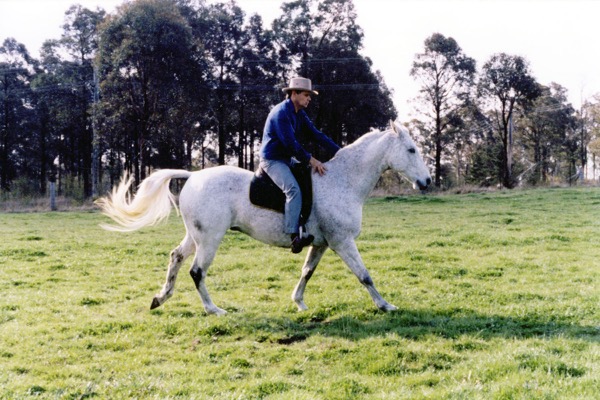Giving is a state of mind.
It’s not a physical condition whereby a horse carries his head low and feels soft in your hand.
When a horse is ‘giving’ it means he’s relaxed, listening, moving forward and trying his hardest for you.
To teach a horse to give, he must first be taught to move forward correctly.
It takes months of careful, consistent training to teach any horse to move forward correctly.
Forward movement can only come from using your seat and legs.
At the same time, you must use your reins to control your horse’s speed.
First, you must drive your horse forward with your seat and legs.
At the same time, take the rein to ask him to slow down and lower his head.
The second your horse responds by slowing or lowering his head even a fraction, you must immediately give with your rein.
In the initial stages of training, you may have to take and give every few seconds.
When you have some control, you can ask your horse to round his back and lower his head and neck so that he moves in the correct frame.
Like everything you teach your horse, this must be taught one step at a time.
Don’t pull constantly against your horse – he’s much stronger than you.
If you pull constantly, your horse will hang against the reins and you’ll always have a hard feeling in your hand.
Please remember, you can’t out-pull any horse.
Many people think they can teach a horse to give by tying his head down or lungeing him with side reins tied onto a girth.
When you do this, there’s no take and give, and the horse can’t bend his neck in the arc of the circle.
In this situation, the horse will move with an artificial feeling of lightness and learn to get behind the bit.
When a horse has had his head tied down, it’s very difficult to teach him to take contact with the bit and to move forward and bend.
After all, the only way such a horse has been able to avoid the pulling on his mouth is to keep behind the bit and keep his neck straight.
Tying a horse’s head down can be very dangerous.
If the horse doesn’t understand what’s wanted and fights against the bit, he may rear over backwards and be seriously injured or killed.
Always remember, there are no short cuts in horse training.
Never tie any horse’s head down.
It’s dangerous and it won’t help your horse to listen and give and try his hardest for you.

